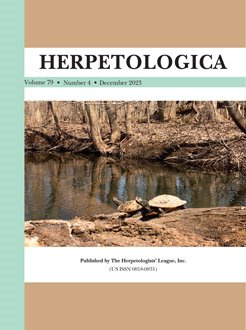Reintroduction of species at sites where populations have been extirpated has become a common technique in wildlife conservation. To track progress towards reintroduction success, effective postrelease monitoring is needed to document vital rates of individuals and the corresponding impact on population trajectories. We assessed growth and body size in Eastern Indigo Snakes (Drymarchon couperi) using a data set from multiple projects across the species' distribution, including free-ranging wild snakes, snakes reared in captive-breeding programs, and snakes released at two reintroduction sites. We used these data to fit a von Bertalanffy growth model in a Bayesian framework to quantify differences in growth among three broad categories of snakes (wild, captive, and reintroduced), while accounting for measurement error across various projects. We also compared changes in body mass of captive-born individuals from four captive rearing facilities. Asymptotic snout–vent length across all groups was 185 cm (95% credible interval = 177–194 cm) for males and 157 cm (95% credible interval = 153–161 cm) for females. Reintroduced snakes had a higher growth coefficient than either captive or wild snakes (e.g., captive females = 1.20 [1.06–1.35] d–1; wild females = 1.22 [0.95–1.49] d–1; reintroduced females = 1.62 [1.21–2.05] d–1), indicating that current captive-breeding and rearing efforts for indigo snakes produce similar or faster growth trends compared to wild populations. Furthermore, daily changes in juvenile body weight relative to body size were similar in three of the four captive rearing facilities (mean for females at Orianne Center for Indigo Conservation = 0.57 [0.48–0.65]; Zoo Atlanta = 0.55 [0.37–0.72]; Welaka National Fish Hatchery = 0.55, [0.36–0.73]; Auburn University = 0.39 [0.21–0.58]). Long-term project success for indigo snake reintroductions will depend on continuing to implement best practices in an adaptive management framework.
How to translate text using browser tools
29 December 2023
Evaluating Growth Rates of Captive, Wild, and Reintroduced Populations of the Imperiled Eastern Indigo Snake (Drymarchon couperi)
Houston C. Chandler,
David Steen,
Jack Blue,
James E. Bogan,
M. Rebecca Bolt,
Tony Brady,
David R. Breininger,
Jorge Buening,
Matt Elliott,
James Godwin,
Craig Guyer,
Robert L. Hill,
Michelle Hoffman,
Natalie L. Hyslop,
Christopher L. Jenkins,
Chris Lechowicz,
Matt Moore,
Robert A. Moulis,
Sara Piccolomini,
Robert Redmond,
Frankie H. Snow,
Benjamin S. Stegenga,
Dirk J. Stevenson,
James Stiles,
Sierra Stiles,
Mark Wallace,
Jimmy Waters,
Michael Wines,
Javan M. Bauder
ACCESS THE FULL ARTICLE

Herpetologica
Vol. 79 • No. 4
December 2023
Vol. 79 • No. 4
December 2023
captive rearing
conservation
Headstarting
monitoring
von Bertalanffy growth model




